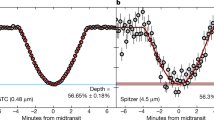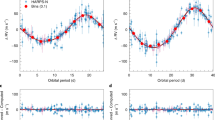Abstract
The discovery of planetary systems beyond our Solar System has challenged established theories of planetary formation. Planetary orbits display a variety of unexpected architectures, and free-floating planets appear ubiquitous. The recently reported detection of candidate Jupiter-mass binary objects (JuMBOs) by the James Webb Space Telescope (JWST) has added another puzzling layer. Here, we demonstrate in direct few-body simulations that JuMBOs could arise from the ejection of two giant planets following a close encounter with a passing star, if the two planets are nearly aligned at closest approach. These ejected JuMBOs typically have an average semimajor axis approximately three times the orbital separation within their original planetary system and a high eccentricity, characterized by a superthermal distribution that sets them apart from those formed primordially. We estimate the JuMBO formation rate per planetary system in typical and densely populated clusters, revealing a significant environmental dependence. In dense clusters, this formation rate can reach a few percent for wide planetary systems. A comparative analysis of JuMBO rates and properties with current and forthcoming JWST observations across various environments promises to offer insights into the conditions under which these giant planets formed in protoplanetary disks, thereby imposing constraints on theories of giant planet formation.
This is a preview of subscription content, access via your institution
Access options
Access Nature and 54 other Nature Portfolio journals
Get Nature+, our best-value online-access subscription
$29.99 / 30 days
cancel any time
Subscribe to this journal
Receive 12 digital issues and online access to articles
$119.00 per year
only $9.92 per issue
Buy this article
- Purchase on Springer Link
- Instant access to full article PDF
Prices may be subject to local taxes which are calculated during checkout






Similar content being viewed by others
Data availability
Data are available at via figshare at https://doi.org/10.6084/m9.figshare.25331110.v2 (ref. 62).
Code availability
The code for SpaceHub is available via GitHub at https://github.com/YihanWangAstro/SpaceHub (ref. 63). The problem generator and data process script are available via GitHub at https://github.com/YihanWangAstro/JuMBO-code/tree/main (ref. 64).
References
Christiansen, J. L. Five thousand exoplanets at the NASA Exoplanet Archive. Nat. Astron. 6, 516–519 (2022).
Zhu, W. & Dong, S. Exoplanet statistics and theoretical implications. Annu. Rev. Astron. Astrophys. 59, 291–336 (2021).
Pollack, J. B. et al. Formation of the giant planets by concurrent accretion of solids and gas. Icarus 124, 62–85 (1996).
Ormel, C. W. & Klahr, H. H. The effect of gas drag on the growth of protoplanets. Analytical expressions for the accretion of small bodies in laminar disks. Astron. Astrophys. 520, A43 (2010).
Lambrechts, M. & Johansen, A. Rapid growth of gas-giant cores by pebble accretion. Astron. Astrophys. 544, A32 (2012).
Mayor, M. & Queloz, D. A Jupiter-mass companion to a solar-type star. Nature 378, 355–359 (1995).
Winn, J. N. & Fabrycky, D. C. The occurrence and architecture of exoplanetary systems. Annu. Rev. Astron. Astrophys. 53, 409–447 (2015).
Morales, J. C. et al. A giant exoplanet orbiting a very-low-mass star challenges planet formation models. Science 365, 1441–1445 (2019).
Marois, C. et al. Direct imaging of multiple planets orbiting the star HR 8799. Science 322, 1348–1352 (2008).
Lafrenière, D. et al. Discovery of an ~23 MJup brown dwarf orbiting ~700 au from the massive star HIP 78530 in Upper Scorpius. Astrophys. J. 730, 42 (2011).
Deacon, N. R., Schlieder, J. E. & Murphy, S. J. A nearby young M dwarf with a wide, possibly planetary-mass companion. Mon. Not. R. Astron. Soc. 457, 3191–3199 (2016).
Miret-Roig, N. et al. A rich population of free-floating planets in the Upper Scorpius young stellar association. Nat. Astron. 6, 89–97 (2022).
Pearson, S. G. & McCaughrean, M. J. Jupiter mass binary objects in the Trapezium cluster. Preprint at https://arxiv.org/abs/2310.01231 (2023).
Lin, D. N. C., Bodenheimer, P. & Richardson, D. C. Orbital migration of the planetary companion of 51 Pegasi to its present location. Nature 380, 606–607 (1996).
Winn, J. N., Fabrycky, D., Albrecht, S. & Johnson, J. A. Hot stars with hot Jupiters have high obliquities. Astrophys. J. Lett. 718, L145–L149 (2010).
Chatterjee, S., Ford, E. B., Matsumura, S. & Rasio, F. A. Dynamical outcomes of planet–planet scattering. Astrophys. J. 686, 580–602 (2008).
Lee, E. J. The boundary between gas-rich and gas-poor planets. Astrophys. J. 878, 36 (2019).
Lambrechts, M. & Johansen, A. Forming the cores of giant planets from the radial pebble flux in protoplanetary discs. Astron. Astrophys. 572, A107 (2014).
Veras, D. & Raymond, S. N. Planet-planet scattering alone cannot explain the free-floating planet population. Mon. Not. R. Astron. Soc. 421, L117–L121 (2012).
Boss, A. P. Giant planet formation by gravitational instability. Science 276, 1836–1839 (1997).
Gammie, C. F. Nonlinear outcome of gravitational instability in cooling, gaseous disks. Astrophys. J. 553, 174–183 (2001).
Rafikov, R. R. Can giant planets form by direct gravitational instability? Astrophys. J. Lett. 621, L69–L72 (2005).
Boley, A. C. & Durisen, R. H. On the possibility of enrichment and differentiation in gas giants during birth by disk instability. Astrophys. J. 724, 618–639 (2010).
Nayakshin, S. Formation of terrestrial planet cores inside giant planet embryos. Mon. Not. R. Astron. Soc. 413, 1462–1478 (2011).
Zhu, Z., Hartmann, L., Nelson, R. P. & Gammie, C. F. Challenges in forming planets by gravitational instability: disk Irradiation and clump migration, accretion, and tidal destruction. Astrophys. J. 746, 110 (2012).
Keppler, M. et al. Discovery of a planetary-mass companion within the gap of the transition disk around PDS 70. Astron. Astrophys. 617, A44 (2018).
Haffert, S. Y. et al. Two accreting protoplanets around the young star PDS 70. Nat. Astron. 3, 749–754 (2019).
Laughlin, G. & Adams, F. C. The modification of planetary orbits in dense open clusters. Astrophys. J. Lett. 508, L171–L174 (1998).
Bonnell, I. A., Smith, K. W., Davies, M. B. & Horne, K. Planetary dynamics in stellar clusters. Mon. Not. R. Astron. Soc. 322, 859–865 (2001).
Ford, E. B., Rasio, F. A. & Yu, K. Chaotic interactions in multiple planet systems. ISSI Sci. Rep. Ser. 6, 123–136 (2006).
Malmberg, D. et al. Close encounters in young stellar clusters: implications for planetary systems in the solar neighbourhood. Mon. Not. R. Astron. Soc. 378, 1207–1216 (2007).
Fregeau, J. M., Chatterjee, S. & Rasio, F. A. Dynamical interactions of planetary systems in dense stellar environments. Astrophys. J. 640, 1086–1098 (2006).
Malmberg, D., Davies, M. B. & Heggie, D. C. The effects of fly-bys on planetary systems. Mon. Not. R. Astron. Soc. 411, 859–877 (2011).
Hao, W., Kouwenhoven, M. B. N. & Spurzem, R. The dynamical evolution of multiplanet systems in open clusters. Mon. Not. R. Astron. Soc. 433, 867–877 (2013).
Shara, M. M., Hurley, J. R. & Mardling, R. A. Dynamical interactions make hot Jupiters in open star clusters. Astrophys. J. 816, 59 (2016).
Cai, M. X., Kouwenhoven, M. B. N., Portegies Zwart, S. F. & Spurzem, R. Stability of multiplanetary systems in star clusters. Mon. Not. R. Astron. Soc. 470, 4337–4353 (2017).
Flammini Dotti, F., Kouwenhoven, M. B. N., Cai, M. X. & Spurzem, R. Planetary systems in a star cluster. I. The Solar System scenario. Mon. Not. R. Astron. Soc. 489, 2280–2297 (2019).
Fragione, G. Dynamical origin of S-type planets in close binary stars. Mon. Not. R. Astron. Soc. 483, 3465–3471 (2019).
Li, D., Mustill, A. J. & Davies, M. B. Fly-by encounters between two planetary systems. I. Solar System analogues. Mon. Not. R. Astron. Soc. 488, 1366–1376 (2019).
Wang, Y.-H., Perna, R. & Leigh, N. W. C. Planetary architectures in interacting stellar environments. Mon. Not. R. Astron. Soc. 496, 1453–1470 (2020).
Wang, Y.-H., Perna, R. & Leigh, N. W. C. Giant planet swaps during close stellar encounters. Astrophys. J. Lett. 891, L14 (2020).
Li, D., Mustill, A. J. & Davies, M. B. Flyby encounters between two planetary systems. II. Exploring the interactions of diverse planetary system architectures. Mon. Not. R. Astron. Soc. 496, 1149–1165 (2020).
Moore, N. W. H., Li, G. & Adams, F. C. Inclination excitation of Solar System debris disk due to stellar flybys. Astrophys. J. 901, 92 (2020).
Wang, Y.-H., Leigh, N. W. C., Perna, R. & Shara, M. M. Hot Jupiter and ultra-cold Saturn formation in dense star clusters. Astrophys. J. 905, 136 (2020).
Carter, E. J. & Stamatellos, D. On the survivability of a population of gas giant planets on wide orbits. Mon. Not. R. Astron. Soc. 525, 1912–1921 (2023).
Chen, C., Martin, R. G., Lubow, S. H. & Nixon, C. J. Tilted circumbinary planetary systems as efficient progenitors of free-floating planets. Astrophys. J. Lett. 961, L5 (2024).
Heggie, D. C. Binary evolution in stellar dynamics. Mon. Not. R. Astron. Soc. 173, 729–787 (1975).
Hut, P. & Bahcall, J. N. Binary-single star scattering. I. Numerical experiments for equal masses. Astrophys. J. 268, 319–341 (1983).
Sigurdsson, S. & Phinney, E. S. Binary-single star interactions in globular clusters. Astrophys. J. 415, 631–651 (1993).
Mathieu, R. D. Pre-main-sequence binary stars. Annu. Rev. Astron. Astrophys. 32, 465–530 (1994).
Raghavan, D. et al. A survey of stellar families: multiplicity of solar-type stars. Astrophys. J. Suppl. Ser. 190, 1 (2010).
Hillenbrand, L. A. & Hartmann, L. W. A preliminary study of the Orion nebula cluster structure and dynamics. Astrophys. J. 492, 540–553 (1998).
Nielsen, E. L. et al. The Gemini Planet Imager Exoplanet Survey: giant planet and brown dwarf demographics from 10 to 100 au. Astron. J. 158, 13 (2019).
Vigan, A. et al. The SPHERE infrared survey for exoplanets (SHINE). III. The demographics of young giant exoplanets below 300 au with SPHERE. Astron. Astrophys. 651, A72 (2021).
Zwart, S. P. & Hochart, E. The origin and evolution of wide Jupiter mass binary objects in young stellar clusters. Preprint at https://arxiv.org/abs/2312.04645 (2023).
Wang, Y.-H., Leigh, N. W. C., Liu, B. & Perna, R. SpaceHub: a high-performance gravity integration toolkit for few-body problems in astrophysics. Mon. Not. R. Astron. Soc. 505, 1053–1070 (2021).
Chambers, J. E., Wetherill, G. W. & Boss, A. P. The stability of multi-planet systems. Icarus 119, 261–268 (1996).
Adams, F. C. The birth environment of the Solar System. Annu. Rev. Astron. Astrophys. 48, 47–85 (2010).
Boley, A. C. The two modes of gas giant planet formation. Astrophys. J. Lett. 695, L53–L57 (2009).
Vicente, S. M. & Alves, J. Size distribution of circumstellar disks in the Trapezium cluster. Astron. Astrophys. 441, 195–205 (2005).
Mann, R. K. & Williams, J. P. The circumstellar disk mass distribution in the Orion Trapezium cluster. Astrophys. J. Lett. 694, L36–L40 (2009).
Wang, Y. jumbo dataset 1. figshare https://doi.org/10.6084/m9.figshare.25331110.v2 (2024).
Wang, Y. SpaceHub: a high-performance gravity integration toolkit for few-body problems in astrophysics. GitHub https://github.com/YihanWangAstro/SpaceHub (2019).
Wang, Y. Free-floating binary planets from ejections during close stellar encounters. GitHub https://github.com/YihanWangAstro/JuMBO-code/tree/main (2013).
Acknowledgements
R.P. acknowledges support from the National Science Foundation (Award No. AST-2006839). Y.W. and Z.Z. acknowledge support from NASA (Grant No. 80NSSC23M0104) and the Nevada Center for Astrophysics.
Author information
Authors and Affiliations
Contributions
R.P. proposed the model idea. Y.W. devised the numerical experiments, processed the data and performed the calculations. Z.Z. provided input on the models of planetary formation. R.P. and Y.W. drafted the first version of the manuscript. All authors contributed to the analysis and interpretation of the data, as well as to the final version of the manuscript.
Corresponding author
Ethics declarations
Competing interests
The authors declare no competing interests.
Peer review
Peer review information
Nature Astronomy thanks Nathan Kaib, Sean Raymond and the other, anonymous, reviewer(s) for their contribution to the peer review of this work.
Additional information
Publisher’s note Springer Nature remains neutral with regard to jurisdictional claims in published maps and institutional affiliations.
Rights and permissions
Springer Nature or its licensor (e.g. a society or other partner) holds exclusive rights to this article under a publishing agreement with the author(s) or other rightsholder(s); author self-archiving of the accepted manuscript version of this article is solely governed by the terms of such publishing agreement and applicable law.
About this article
Cite this article
Wang, Y., Perna, R. & Zhu, Z. Free-floating binary planets from ejections during close stellar encounters. Nat Astron (2024). https://doi.org/10.1038/s41550-024-02239-2
Received:
Accepted:
Published:
DOI: https://doi.org/10.1038/s41550-024-02239-2



